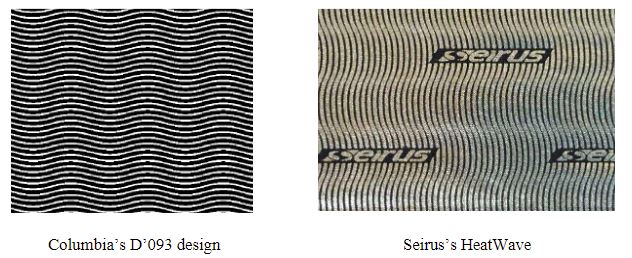How can you reduce the risk of patent infringement?
It depends. Patent professionals, including myself, constantly stress that a patent does not protect its owner from infringement. Anyone who has read my posts on the differences between patentability and infringement will understand this long-standing principle. You can own a patent and still infringe someone else’s patent. Let’s explore whether a design patent might protect the patent owner from infringement.
Need to sell product without infringing patents? Contact US patent attorney Vic Lin at vlin@icaplaw.com to explore how we can help you navigate around patent landmines.
Would filing a design patent application help protect from infringement?
Getting a design patent would not necessarily protect you from infringement of utility patents. But, what if getting a design patent could somehow protect you from infringing other design patents?
Design patents present a unique opportunity for competitors to reduce the risk of infringement. In some cases, a design patent owner might be able to shield themselves from design patent infringement.
Patentable Test vs. Design Patent Infringement Test
The test to avoid design patent infringement is not the same as the test to be patentable, although both standards share some common elements. To infringe a design patent, an accused product must appear substantially similar to a patented design in the eyes of the ordinary observer while taking into account the prior art and any functional features.
To be patentable, a design must be novel and nonobvious over the prior art. So, here’s the question. If you succeed in obtaining a design patent, your design has been determined by the USPTO as being novel and nonobvious. Would your patented design, which is novel and nonobvious, be considered as not substantially similar to another design patent?
In other words, can “novel and nonobvious” help meet the test of “not substantially similar” in appearance?
Let’s illustrate with a hypothetical. Suppose you take a competitor’s product covered an existing design patent and added a distinctive visual feature (I’m not recommending that you do this). You then file a design patent application for your new and improved product with the new visual feature, and the USPTO grants your design patent.
Can your design patent help show that your new product is not substantially similar in appearance to the prior design patent?
What changes can help avoid design patent infringement?
Let’s look at the example of the Columbia vs. Seirus design patent case where Seirus added a logo to their HeatWave pattern:

So what can we learn from this noninfringement case that might apply to filing design patent applications? Is there merit to filing new design patents for modified designs that may then bolster the noninfringement argument for the modified designs?
File design patents or do Freedom-To-Operate (FTO) patent search?
A budget, by definition, is limited in resources. Every dollar you choose to spend on an FTO search may be one less dollar to invest in filing patents. When it comes to the risk of infringing design patents, would your money be better spent filing design patent applications or searching design patents that cover your design?
Need to a smart design patent strategy?
Contact US design patent attorney Vic Lin by email at vlin@icaplaw.com or call (949) 223-9623 to see how we can develop and execute a strategy to protect your products with design patents.


